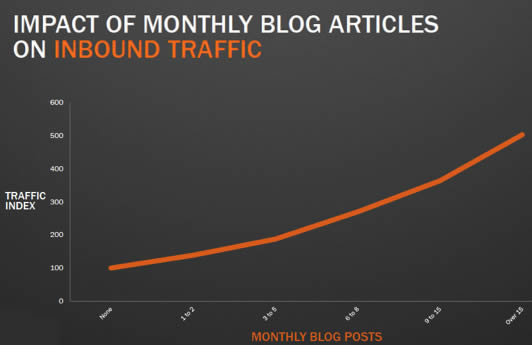Business Blogging, aid for the Blog Writer
 Nearly 40% of US companies use blogs for marketing purposes. Companies that blog have 55% more website visitors. B2C companies that blog get 88% more leads/month than those who don’t. B2B companies that blog get 67% more leads/month than those who don’t. But merely blogging won’t dramatically transform your marketing. Your blog has to be well-optimized and promoted, and, most of all, rich with content. Frequency of blogging plays an important role in this equation, too. In fact, our research “Lead Generation Lessons From 4,000 Businesses” shows that companies who blog 20 or more times in a month see the most return in traffic and leads. A blog is a long-term marketing asset that will bring traffic and leads to your business. Through the blog, the blog writer introduces you as a thought leader in your space and allows you to earn people’s trust. In this ebook we will walk you step-by-step through the blogging fundamentals and show you how to start reaping the benefits of this marketing channel.
Nearly 40% of US companies use blogs for marketing purposes. Companies that blog have 55% more website visitors. B2C companies that blog get 88% more leads/month than those who don’t. B2B companies that blog get 67% more leads/month than those who don’t. But merely blogging won’t dramatically transform your marketing. Your blog has to be well-optimized and promoted, and, most of all, rich with content. Frequency of blogging plays an important role in this equation, too. In fact, our research “Lead Generation Lessons From 4,000 Businesses” shows that companies who blog 20 or more times in a month see the most return in traffic and leads. A blog is a long-term marketing asset that will bring traffic and leads to your business. Through the blog, the blog writer introduces you as a thought leader in your space and allows you to earn people’s trust. In this ebook we will walk you step-by-step through the blogging fundamentals and show you how to start reaping the benefits of this marketing channel.
Fact 1
Business blogging helps you rank in search engines and get found when people search for industry-specific products or services. Thus the blog enables you to attract organic traffic and familiarize people with your business.
- Frequency Matters – research has shown that businesses who blog 16 to 20 times per month get over two times more traffic than those who blog less than four times per month.
- Optimize Your Posts – The other essential element of attracting more traffic through organic search is optimizing your blog posts. Make sure your blog titles incorporate industry keywords that people enter in search engines as they do research.
- What is the most important search engine keyword that you have not yet blogged about Take that keyword, and write a blog post about it. Blogging is a great tool for driving search engine traffic.
 Fact 2
Fact 2
Your blog is an asset that introduces you as a thought leader. So if you have some industry specific information to share, a blog will help you earn people’s trust and stay top of mind for many in your community. 71% say blogs affect their purchasing decisions.
- Be a Problem Solver – Name the biggest problem your customers have. With that proem in mind, write a detailed blog post that provides practical and non-product focused solutions. Solve your customers’ problems with content.
- Build thought leadership – Use your blog as a platform to showcase your expertise on a given subject. Inject your knowledge of the industry into your blog posts and make a clear distinction between your brand and your competition.
- Earn People’s Trust – How often does one proceed to a purchase decision with blogging research? 71% of respondents said that blogs affect their purchasing decisions either somewhat or very much.
 Fact 3
Fact 3
A blog gives you real estate to place calls-to-action in order to generate leads. At this stage of the game you are trying to retain your blog readers and engage them further with your website and your content. So you might ask them to attend your webinar or to download a free guide that you have. Calls-to-action introduce your prospects into the buying process and start qualifying them.
- CTAs in Sidebar – One possible placement of calls-to-action is the sidebar of your blog. You can create banners to advertise some of your top-performing offers and add them around your blog for visitors to click on.
- CTAs in Blog Posts – You can place calls-to-action within the blog post itself, at the beginning, middle or end of the article. Also, don’t forget to create contextual calls-to-action, by hyperlinking words to their according offers that you have.
- Make Blog CTAs Contextual – Make sure you are matching the content you have written to the offer you want to highlight. In that way you create a seamless connection between the two and serve the reader who is ready to learn more about the topic. This is a very natural way of gauging interest and capturing leads. The contextual call-to-action is going to be much more appealing and have a much higher click-through rate to the subsequent landing page.
Another blog you may enjoy.
